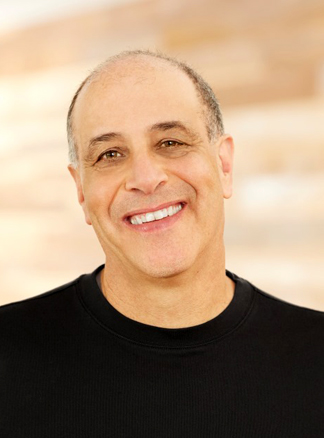
Carl Bass, President & CEO, Autodesk.
Latest News
March 8, 2017
 Carl Bass, President & CEO, Autodesk.
Carl Bass, President & CEO, Autodesk.“I love Autodesk and am immensely proud of what we have created together, but it’s time for me to do something new,” writes Carl Bass, who has been Autodesk CEO since 2006. He made his departure public on February 7 in a letter published online in the Autodesk blog In the Fold.
The post he vacated is succeeded by two long-time Autodesk veterans: Amar Hanspal, senior VP and chief product officer, and Andrew Anagnost, senior VP and chief marketing officer. The two will serve as interim joint-CEOs while the company’s board conducts a CEO search.
During Autodesk Design Nights, a series of networking events at the Autodesk Gallery, Bass mingles with the guests, many of whom are Autodesk software users. A furniture and sculpture maker in his free times, Bass owns a workshop in Berkeley, California. As he gets ready to start his post-Autodesk chapter, Bass sits down with DE to share his thoughts on the industry, the company he’s leaving behind, and his rivals in the business.
Q: What is the difference between the company you inherited from Carol Bartz (Autodesk CEO, 1992-2006) and the company you’re leaving behind?
A: In some ways, it’s the same company. For 35 years, the company has been interested in building engineering software. That’s consistent. I’d say the company today is broader than the one I inherited. We’ve become much stronger in how things are made, manufactured, and fabricated. Early on, we were only making software for people to build digital models. 3D printing was part of the broader initiative that resulted from our interest in how things are made. I also think we’re leading the industry in many areas, whether it’s moving to the cloud or in developing generative design tools.
Notes: During Bass’ reign, Autodesk expanded beyond the professional design market into the consumer space with products like SketchBook Pro, a digital drawing program, and Instructables, a maker community. It also acquired HSMWorks and Delcam, whose technologies became the cornerstones of the company’s computer-aided manufacturing (CAM) offerings.
Q: What were the biggest risks you took during your reign?
A: Certainly the move to pure subscription business was a risk. [DE‘s report on Autodesk’s move to subscription.] Also, I made an early bet that architecture design was moving to 3D modeling. I placed a $135 million bet on Revit, a company with no revenue, no customer. That’s pretty big risk. In my last few years, the move to the cloud was a huge bet—just the size and scope of the bet that engineering software would move to the cloud.
Notes: Autodesk Revit has since become a leading parametric architecture modeler.
Q: Reflections on Autodesk’s competitors? Are there some things they did that make you say, “Hmm, I wish I’d done that”?
A: I wish we had bought SolidWorks before Dassault did. We had the opportunity to do that, but we didn’t. Then again, Dassault had the opportunity in the early 2000s to buy Autodesk for a fraction of what it’s now worth. I was laughing the other day when I remembered that, at the time, Dassault passed on Autodesk, saying it was a declining asset. But I look at our market capitals today—we are virtually identical.
Notes: Dassault Systemes acquired SolidWorks in 1997. Autodesk stock price stands at $87 per share today, while Dassault Systemes stock is at €76 per share. Autodesk’s reported revenue for 2014 was $2.5 billion. Dassault Systemes’ reported revenue for 2015 was €2.8 billion.
Q: What would be your advice for a new startup trying to break into the CAD market today?
A: I’d say, find some difficult problems that haven’t been solved. I think too many people come into this business with a new technology first, then go look for a problem to solve. Much is still needed to help people design, engineer, and manufacture products—like generative design, where people have to partner with computers. They can use virtually infinite amount of computing power to come up with new designs, but add machine learning to it and it gets even more complex. Also look at how difficult it still is for people to get things made. The workflow between the designers and engineers, and the need for them to work together ... these are still big problems. I have great respect for the people at Onshape. But, I’ve said it before, they weren’t solving a problem; they were building SolidWorks for the cloud.
Notes: Onshape was founded by a group of former SolidWorks executives and talents. It’s recognized as the first browser-based CAD program for the professional market.
Q: Your thoughts on the industry press? Have we become a bit too chummy with the companies we cover? Are we asking enough difficult questions?
A: I do think some of the coverage is a bit soft at times. You should ask difficult questions that are appropriate. I don’t think it’s necessarily a badge of courage to ask difficult questions when they’re not warranted. It’s fine to have an opinion about what we do. You can, for example, like or dislike what we’re doing with the subscription program or the cloud. But what drives me crazy is when somebody speculates on the motivations behind my moves without asking me first. I’d read, “Carl Bass is doing that because ...” Really? Have I ever said or done anything to give an iota of reasons for people to think that? Some of those speculations are about 180 degrees wrong. You can ask the question, give me a chance to answer, then opine on my answer. But pure speculation doesn’t help anybody.
Subscribe to our FREE magazine, FREE email newsletters or both!
Latest News
About the Author
Kenneth Wong is Digital Engineering’s resident blogger and senior editor. Email him at [email protected] or share your thoughts on this article at digitaleng.news/facebook.
Follow DE





